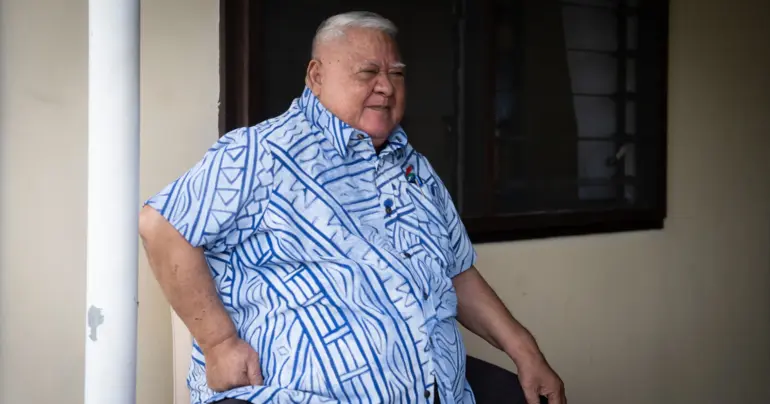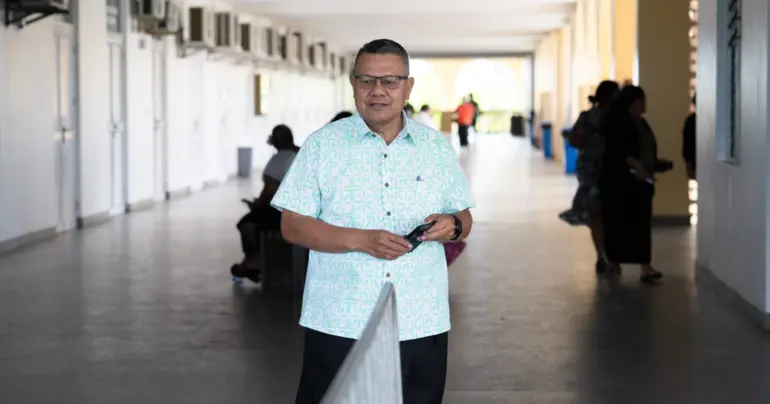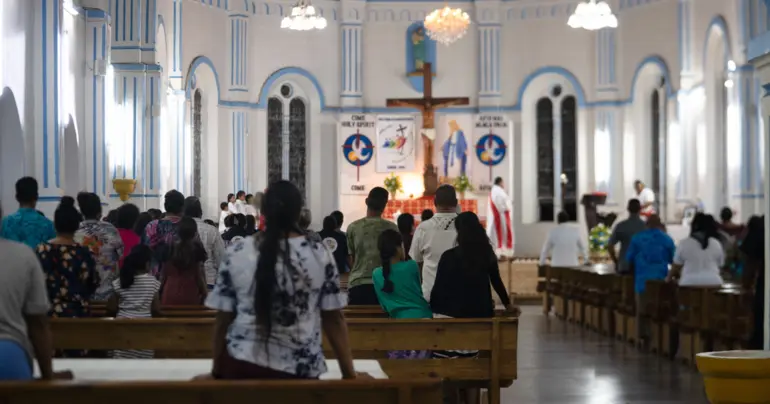Samoa facing major shortage of obstetricians, gynaecologists
 By Ivamere Nataro
•
10 September 2019, 6:27PM
By Ivamere Nataro
•
10 September 2019, 6:27PM
Samoa is facing a serious shortage of obstetricians and gynaecologists.
And the founding Professor of the National University of Samoa's School of Medicine, Aiono Professor Dr. Alec Ekeroma, has called on the university to respond to the unmet need for healthcare.
In a new study in the Pacific Journal of Reproductive Health, lead author Aiono compared the availability, workload and training needs of specialists in gynaecology and obstetrics across the region.
The research found that Samoa has only three Gynaecology and Obstetric specialists, which Aiono said needs to be increased to at least five to ensure there are always sufficient doctors for treatment. Obstetrics is a medical specialty that covers pregnancy, childbirth and the postpartum period whereas gynaecology deals with the female reproductive system.
Aiono said N.U.S. needs to develop a postgraduate programme that produces specialists in the fields and also train people from the region in order to address the shortfall
According to the publication, without an increase in training and a new focus on training professionals in and out of the region, the deficit in supply will only compound.
“The two regional postgraduate institutions [Fiji National University and University of Papua New Guinea] can only graduate a small number of specialists and it will take a long time to fill the gap," Aiono told the Samoa Observer.
“Samoa can strategically develop its specialty programme to become the hub as Fiji cannot produce all the O&G specialists."
The issue of “brain drain” was also highlighted as a cause of shortage with many migrating to Australia and New Zealand, but this has also occurred from countries with lower salaries such as the Solomon Islands to countries with higher salaries such as American Samoa.
“This trend will continue to deprive the countries with the most need of its specialist workforce and will continue until there are an adequate number of specialists in each country and more importantly, the region.”
The gynaecology and obstetrics specialist shortage was most severe in the Melanesian countries compared to Polynesian and Micronesian countries, the paper said.
The uneven distribution of gynaecology and obstetrics specialists in the region was reflected in the better clinical outcomes in Polynesia and worse outcomes in Melanesia, the paper found.
“P.N.G faces a massive problem because of its much larger population and geographically, it is not conducive to medical care, which means they need more health workers on the ground,” Aiono said.
“Polynesian countries are not too bad because of the small population size and geographically, medical services are able to reach most places.”
The paper suggested that the shortage of gynaecology and obstetrics specialists in the Pacific region should be “vehemently tackled with increased political action and investment [... in order] prevent harm due to non-provision of services".
“Barriers to training more specialists need to be addressed both at national and regional levels inclusive of input from key stakeholders and development funders.
“Innovation and investment in creating opportunities for training more specialists, supporting specialists and improving retention strategies of specialists need to be promoted and encouraged.
“Task shifting to nurses, midwives and non-specialist doctors need to be promoted with appropriate policies that support implementation, training and monitoring.”
Aiono currently teaches in the Department of Obstetrics and Gynaecology, School of Medicine and Health Sciences at the University of Otago, New Zealand.
The paper was titled 'Pacific Islands Obstetrics and Gynaecology Workforce Mapping and Survey of Workload and Training Needs'.
 By Ivamere Nataro
•
10 September 2019, 6:27PM
By Ivamere Nataro
•
10 September 2019, 6:27PM











